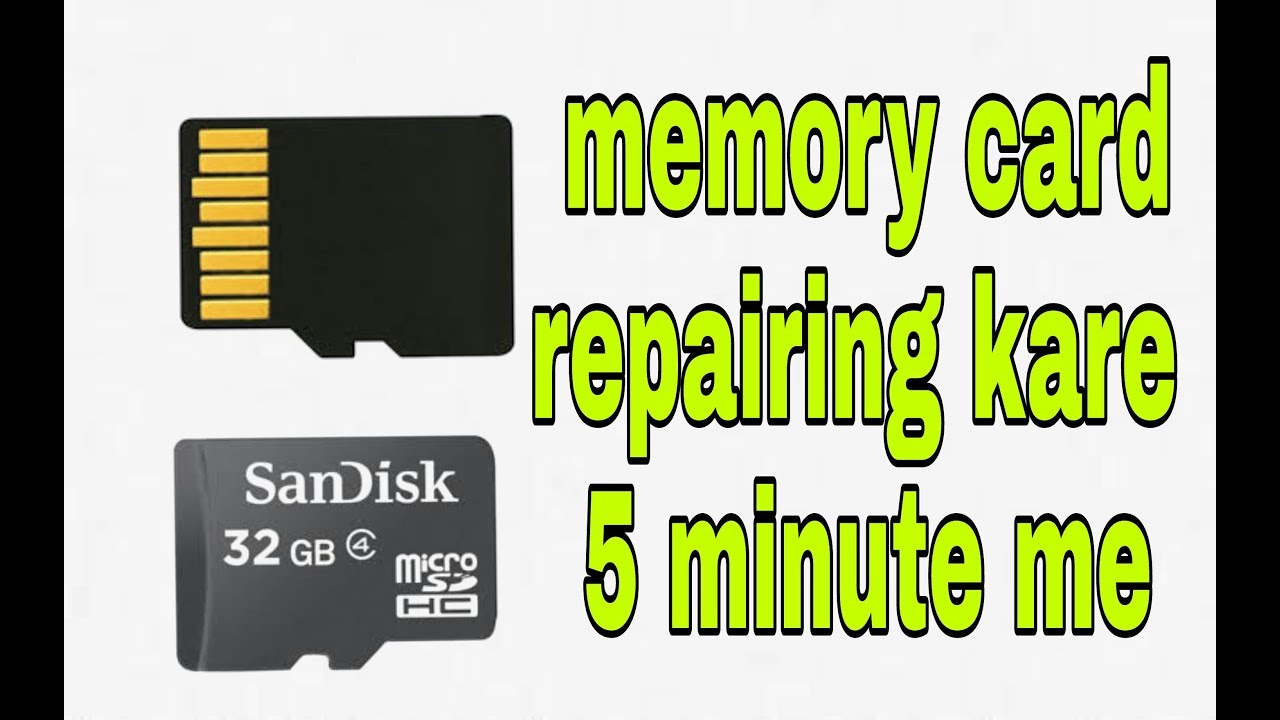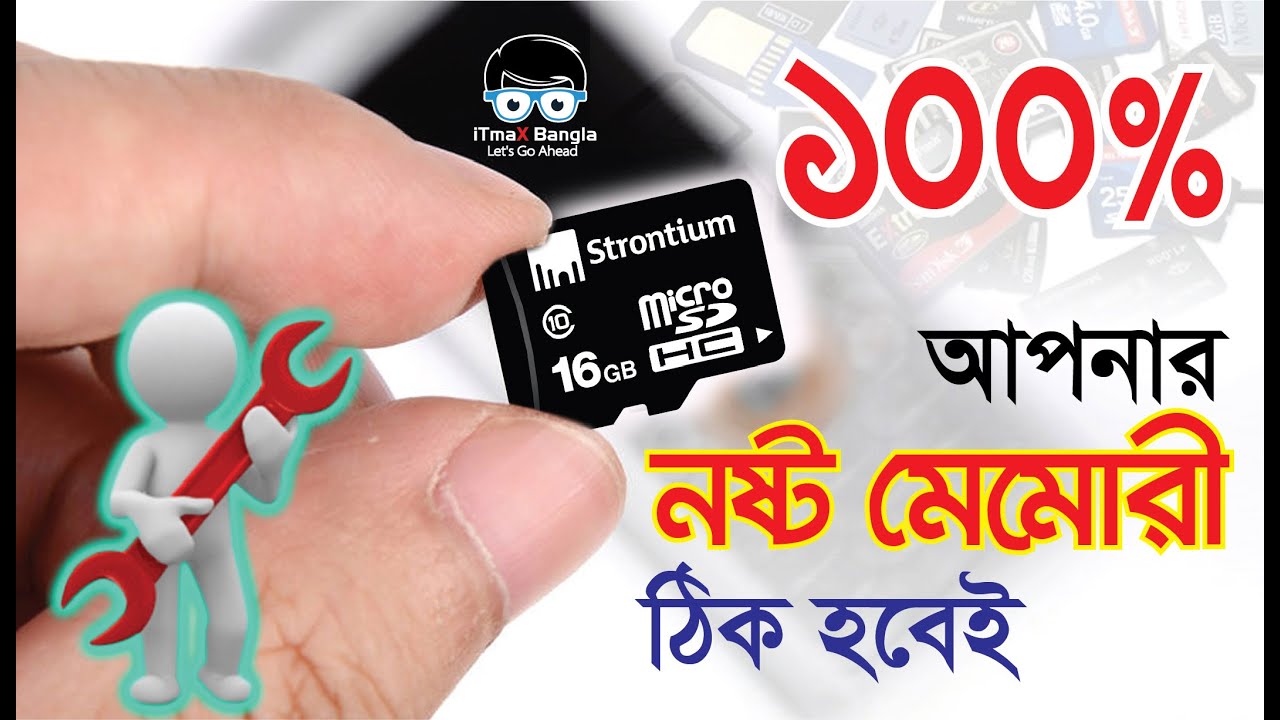Memory cards are an essential part of our digital lives, storing everything from cherished photos to important documents. However, it can be incredibly frustrating when a memory card becomes damaged, leading to potential data loss. The good news is that with the right approach, you may be able to repair your memory card without losing any of your precious files. In this blog post, we’ll explore some easy steps to help you recover your data and get your memory card back in working order.
Common Causes of Memory Card Damage

Understanding what leads to memory card damage can help you avoid future issues and know how to tackle them effectively. Here are some common causes:
- Physical Damage: Dropping your memory card or exposing it to moisture can lead to cracks or malfunctions. Always handle your cards with care!
- Improper Ejection: Removing your memory card without properly ejecting it can cause file system corruption. Always ensure you safely eject the card from your device.
- Power Surges: Unplugging a device while it’s still writing data can result in damage. Use surge protectors to avoid power-related issues.
- Corrupted Files: Sometimes, specific files become corrupted due to various reasons like virus infections or improper shutdowns, leading to overall memory card failure.
- Formatting Errors: Accidental formatting or technical glitches can erase your data, leaving you with an empty card.
- Compatibility Issues: Not all memory cards work with all devices. Using an incompatible card can cause malfunction.
By identifying the common causes of memory card damage, you’re better equipped to prevent problems and ensure the longevity of your storage.
Essential Tools for Repairing a Memory Card

Repairing a damaged memory card can feel daunting, but having the right tools on hand makes the process a lot smoother. A few essential tools will not only help you troubleshoot your memory card issues but also ensure that your data is safeguarded throughout the repair process. Here’s a handy list of tools you’ll need:
- Computer: A reliable computer is crucial, as you'll likely need specialized software to diagnose and repair your memory card.
- Card Reader: If your computer doesn’t have a built-in card reader, an external one is necessary. This allows you to connect your memory card to your computer easily.
- Data Recovery Software: There are several reputable programs that can help recover lost or corrupted files from your memory card. Examples include Recuva, EaseUS Data Recovery Wizard, and Disk Drill.
- File Repair Software: In addition to data recovery tools, you may also need software to repair the file system or specific damaged files. Tools like Stellar File Repair or Microsoft Office Repair can be useful.
- Backup Storage: Before you dive into repairs, it’s always wise to have an alternative storage device—like a USB drive or external hard drive—ready to back up any recoverable data.
- Formatting Tools: Sometimes, formatting the card can resolve issues. You can use built-in OS tools or third-party software for this purpose.
With these tools in hand, you’re set to tackle your memory card problems effectively and efficiently!
Step-by-Step Repair Process

Now that you have your essential tools, it’s time to jump into the step-by-step repair process for your damaged memory card. By following this guide, you'll increase your chances of restoring functionality without losing important data.
- Connect Your Memory Card: Begin by using a card reader to connect your memory card to your computer. Make sure it’s properly recognized before proceeding.
- Backup Available Data: Open your data recovery software and perform a thorough scan of your memory card. If the software identifies any recoverable files, back them up to a different storage device immediately.
- Run a Diagnostic: Use your data recovery tool to conduct a diagnostic check. This will help you identify the nature of the issue—be it file corruption, a corrupted file system, or hardware failure.
- Repair the File System: If the diagnostic suggests issues with the file system, you can use formatting tools to repair it. Choose the “quick format” option initially, as it often suffices.
- Recover Files Again: After repairing the file system, rerun your data recovery software to see if more files can now be recovered. Sometimes, the repair helps in accessing previously undetectable files.
- Test the Memory Card: After completing recovery and repair, safely eject the card and reinsert it. Check if the card functions properly. If issues persist, consider revisiting your software or consulting with a professional.
- Ensure Regular Backups: Once you have successfully repaired your memory card, remember to regularly back up your important data moving forward to avoid similar situations.
By following these straightforward steps, you can breathe new life into your damaged memory card while minimizing data loss. Happy repairing!
Tips to Prevent Future Damage
Once you've successfully repaired your damaged memory card, it's essential to take proactive steps to safeguard it against future issues. Here are some practical tips to prevent future damage:
- Handle with Care: Always treat your memory card gently. Avoid dropping it or exposing it to extreme temperatures or moisture.
- Safely Eject: Before removing your card from any device, always use the "eject" option. This ensures that all data transfers are complete, minimizing the risk of corruption.
- Avoid Overfilling: Try not to fill the memory card to its capacity. Aim to keep it at least 10-20% free for optimal performance and longevity.
- Regular Backups: Frequently back up the data stored on your memory card to other storage devices or cloud services. This offers an added layer of protection against data loss.
- Use Quality Devices: Invest in a reputable memory card brand and ensure your devices (cameras, smartphones, etc.) are also of good quality. Poor devices can corrupt your data.
- Keep it Clean: Store memory cards in protective cases and keep them away from dust and dirt. A clean environment helps prevent physical damage.
By following these simple yet effective tips, you can significantly reduce the risk of damaging your memory card in the future. Remember, a little care goes a long way!
Conclusion
In conclusion, dealing with a damaged memory card can be a frustrating experience, especially when you're worried about losing precious data. However, by following the easy steps outlined in this blog, you can not only repair your memory card but also protect your data from potential loss.
Repairing a damaged memory card can often be accomplished with the right software tools and a careful approach. Remember to:
- Be patient and follow the correct procedures.
- Use reliable software designed for data recovery.
- Always ensure a backup of your data regularly.
Taking preventive measures will also go a long way in prolonging the life of your memory card and protecting your valuable data. Regular maintenance, safe usage practices, and quality storage options are key to ensuring the longevity of your devices.
Following these guidelines not only helps you manage current issues but also prepares you for a smoother experience in the long run. So go ahead, put these tips into practice, and enjoy peace of mind knowing your data is in safe hands!










